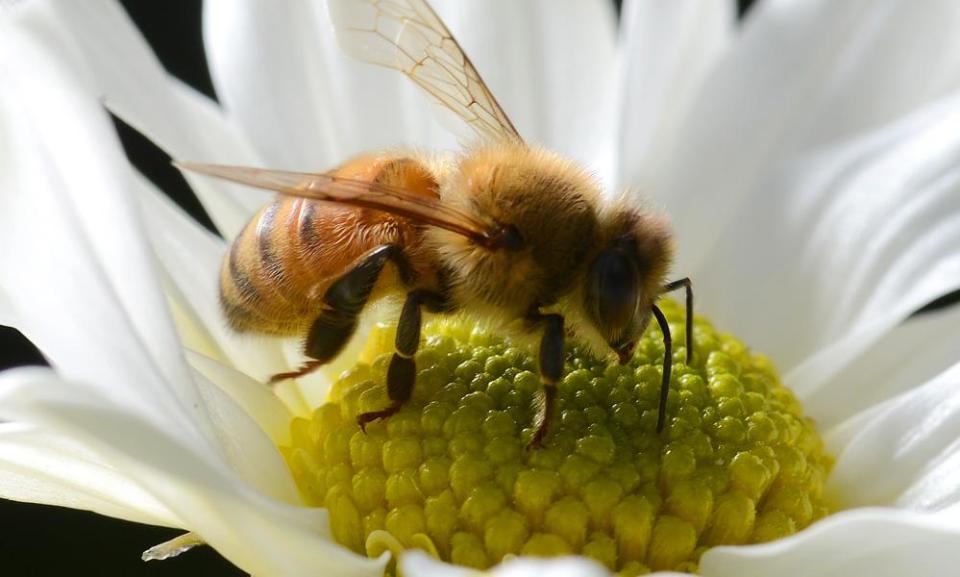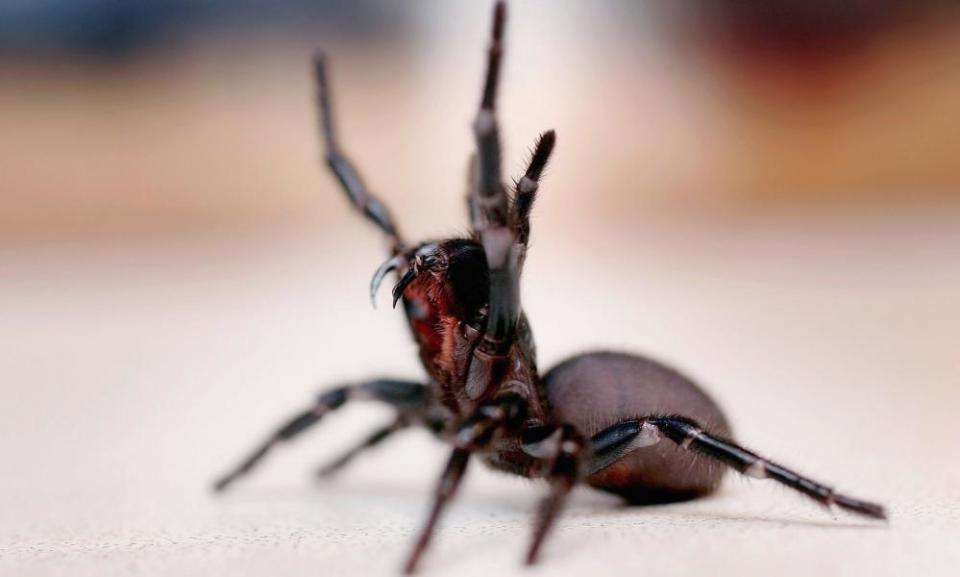Bee sting twice as likely to land Australians in hospital than encounter with venomous wildlife

Australia is home to the 11 most venomous snakes in the world, the deadliest spider in the world, and some of the most venomous marine life. And yet according to a study released on Wednesday, Australians are twice as likely end up in hospital because of a bee or wasp sting than an encounter with any other venomous creature.
The study by the Australian Institute of Health and Welfare examined hospital records from 2017-2018 for reports of people being admitted to hospital – not just treated in the emergency department – after contact with a venomous creature.
More than a third of the 3,520 people admitted to hospital for contact with a venomous animal or plant had been stung by a bee or a wasp. About one in five were taken to hospital for a spider bite, and 17.3% had been bitten by a snake. Some 13.6% had been bitten by an ant, tick or caterpillar, and 11.2% had been stung by a marine animal.
Related: Venomous king brown snake bites Alice Springs girl on both feet in her bed
Just seven people sought hospital treatment following an encounter with a venomous plant.
Australians were taken to hospital for bee and wasp stings in 2017-18 at a rate of five per 100,000, twice the rate of hospitalisation for spiders (2.7 per 100,000) and snakes (2.4 per 100,000).
Bee stings accounted for 927 hospital visits, and wasp stings 329. One unlucky person was recorded as having been stung by both on the same day. No one was stung by a hornet.
Most of the 666 recorded hospitalisations for spider bites concerned the widely distributed redback spider. Sydney’s funnel web spider, the most deadly in the world, accounted for just 25 hospitalisations.

Brown snakes were the most commonly listed venomous snake species on hospital reports. Only seven cases of bite by taipan – the most venomous snake in the world – were listed. Two cases were logged as “contact with powered lawnmower” or “bitten or crushed by snake” as well as a venomous snake bite.
Not included in the report were almost 2,000 cases of people being bitten or crushed by a nonvenomous snake.
The report also listed 73 cases of people being stung by jellyfish, including 41 people who were stung by irukandji jellyfish, and 63 people stung by stingrays.
One-third of the 478 people admitted to hospital after being bitten by an ant, tick or other venomous arthropod were bitten by a jack jumper ant in Tasmania.
Prof James Harrison, who co-authored the AIHW report, said that while people fear Australia’s snakes and spiders, bees were statistically far more dangerous.
Harrison said that most Australian were much more likely to encounter a bee than a snake, but warned those who do have an allergic reaction to bees may have a more severe reaction to other venomous animals as well.
“People who have had significant reactions after being stung by a bee or a wasp or an ant, I would hope that they would be attuned to the possibility that if they have an encounter with a snake or another venomous creature it may be more serious as a result, and seek medical attention,” he said.
Related: Snake mistake: CSIRO says it's a myth that Australia is home to world's deadliest species
A report by the CSIRO in 2019 said that while the venom of Australian snakes had high toxicity levels, they could not be called the deadliest in the world because the annual death toll from snake bites was “practically nothing”.
Barry Goldsmith, a Victorian snake catcher, said fear of snakes is unwarranted: if you quietly back away, in most cases the snake will turn and flee.
“To the layman I suppose they are scary,” Goldsmith said. “They have got no legs, they move in a spooky sort of way. But I think they’re beautiful.”
He has removed thousands of snakes from Melbourne homes in the past 40 years. “You would think if anyone was going to get attacked and bitten, it would have been me.”

 Yahoo Finance
Yahoo Finance 